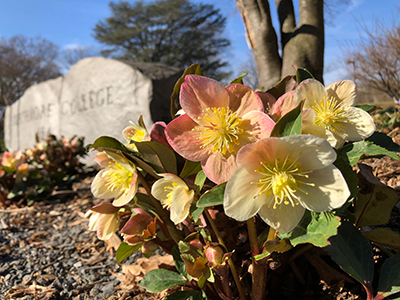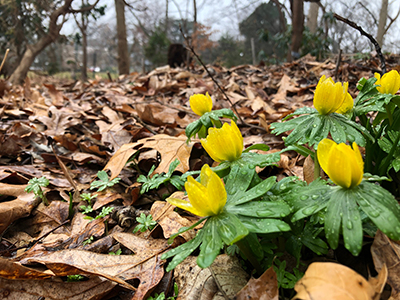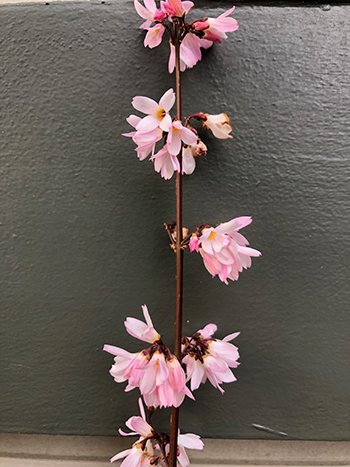
Plants of the Week: March 2

Helleborus x ballardiae ‘Coseh 800’ is a selection of H. x ballardiae from Germany notable for its beautiful display of enormous, forward-facing white flowers, with a huge central cluster of stamens. Flowers age to soft pink. Marketed as HGC Snow Dance, this variety is part of the Heuger Gold Collection. Remove all of the previous seasons foliage in late winter to early spring to highlight the new growth. Look for this hellebore planted near the base of the Swarthmore College rock directly across from the Cunningham House. Photo credit: J. Coceano

Eranthis hyemalis are worker bees of the bulb world and fantastic naturalizers to boot. Each buttercup-like flower is subtended by a collar of leaf-like bracts. A closer inspection around a planting of winter aconite will likely reveal small, non-flowering plants. These plants resemble miniature versions of the green collared bract minus the flower. Basal leaves emerge from mature bulbs after flowering. As an added bonus, the plants aren’t browsed on by deer and are black walnut tolerant. A true win-win in the garden. Mass plantings of Eranthis hyemalis can be seen on Martin Greenhouse bank in the Winter Garden and throughout the Meetinghouse Woods. Photo credit: J. Coceano

Abeliophyllum distichum Roseum Group is a rarely encountered early-flowering shrub. Clusters of light pink flowers appear on bare branches. The species bears white flowers and is often known by the common name white forsythia. While a bit of a one-hit wonder, the shrub provides color variation when most woody plants are blooming in shades of yellow and orange. A great choice for a large shrub border. Consider growing clematis or annual vines over the shrub to provide another season of interest. Cut stems make great additions to flower arrangements. A specimen is in the Terry Shane Teaching Garden. Photo credit: J. Coceano





Wendy Coolen
Posted at 08:57h, 05 MarchNice plants to have, thanks for the highlight.